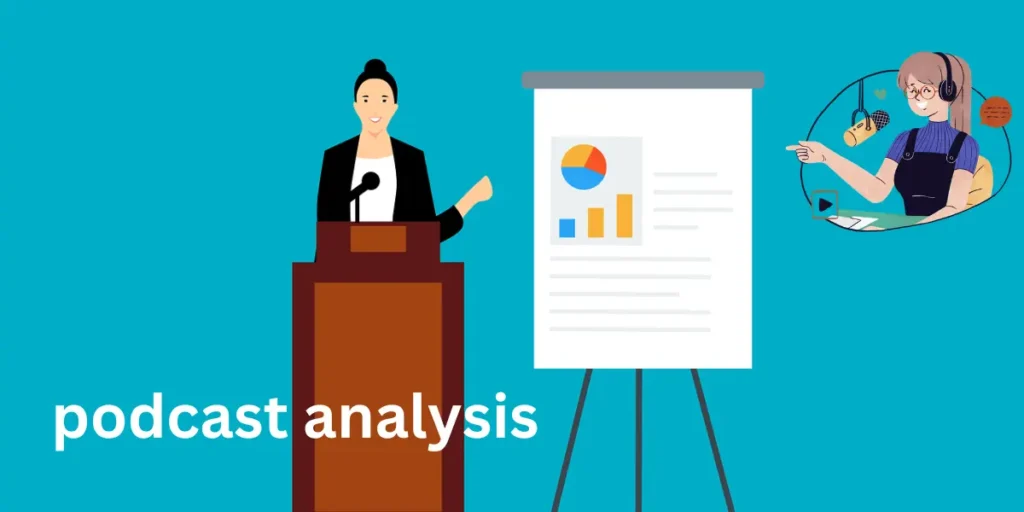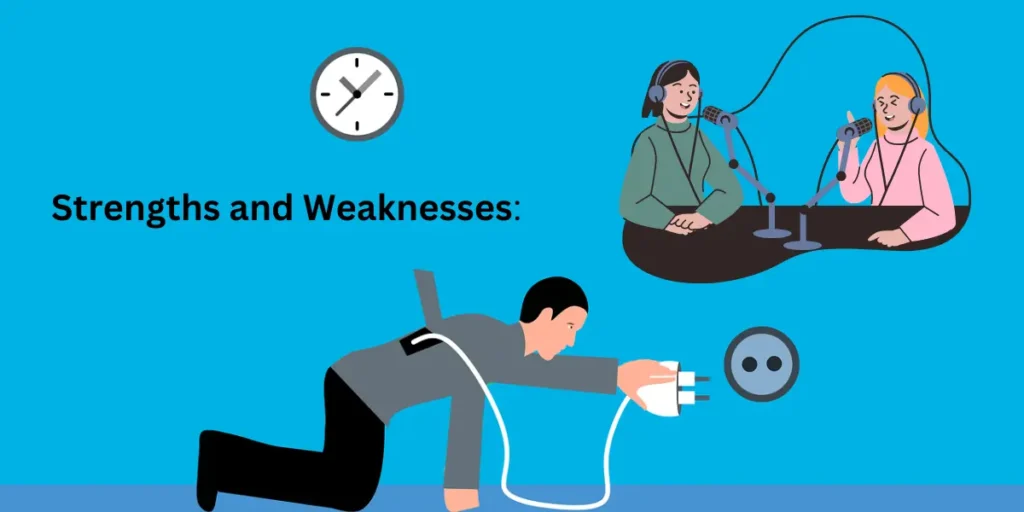How to Write a Podcast Analysis & summary in 2025
Published: 15 Dec 2024
Podcasts have become an essential medium for education, entertainment, and engagement, with millions of episodes available across every conceivable topic. Podcast Analysis & summary
Writing a podcast analysis helps you critically evaluate the content, delivery, and impact of a podcast while providing insights for improvement. Whether you’re a podcaster, marketer, or reviewer, this guide will walk you through the process of creating a comprehensive podcast analysis.
Introduction: for Podcast Analysis
Begin by introducing the podcast you’re analyzing. Mention its title, host(s), genre, and episode(s) or series in focus. Explain why you’ve chosen this podcast and the purpose of the analysis. Are you evaluating its content quality, audience engagement, or production standards? Setting the context helps readers understand the scope and goals of your review. how to conduct podcast analysis
Example: “This analysis focuses on the podcast ‘AI Frontiers,’ hosted by tech expert Sarah Lin, which explores the latest trends in artificial intelligence.

Evaluating Themes and Topics
The content of a podcast is its core. Could you look at the themes and topics in the episode or series? Are they relevant and engaging for the target audience? Does the podcast offer unique perspectives or fresh insights? Evaluate how well the topics are explored—whether the discussions are deep and informative or shallow and repetitive. A strong podcast balances entertainment with educational or thought-provoking content.
Example:
The podcast delves into AI’s ethical implications, providing fresh perspectives supported by real-world examples.”
Depth of Information:
Evaluate whether the podcast provides deep, insightful information or a more surface-level overview.
Structure and Flow:
Analyze how well the podcast organizes its content. Does it progress logically, keeping the listener engaged throughout? what is a podcast trailer
Delivery and Presentation
A podcast’s delivery style can make or break its impact.
Host(s) Performance: Evaluate the host’s style, clarity, and ability to connect with the audience. Are they engaging, knowledgeable, and relatable?
Audience Engagement:
A podcast’s success often depends on how well it engages its audience. Analyze strategies for connecting with listeners, such as shoutouts, Q&A sessions, polls, or social media interactions. Consider how the podcast encourages feedback and fosters a sense of community among its listeners. Audience engagement is crucial for building loyalty and driving growth.
Production Standards:
Production quality can make or break a podcast, regardless of its content. Evaluate the clarity and consistency of the audio. Are there any background noises or technical glitches that distract from the listening experience? Examine the effectiveness of editing—whether transitions are smooth and pacing feels natural. analysis definition and meaning Consider how music and sound effects are used to enhance or detract from the overall quality.
Audience Engagement
Understanding how a podcast connects with its audience is key to analyzing its effectiveness.
Target Audience:
Identify the intended audience and evaluate how well the podcast meets their expectations.
Example:
The podcast effectively engages tech enthusiasts by blending technical insights with accessible explanations.”
Engagement Strategies:
Analyze the podcast’s techniques for engaging listeners, such as Q&A segments, polls, or social media shoutouts.
Listener Feedback:
Review comments, reviews, or ratings to understand audience reactions and overall reception. health and wellness podcast
Comparative Analysis
A podcast doesn’t exist in isolation—compare it to similar ones in its genre.

Benchmarking:
Identify how the podcast stacks up against its competitors in terms of content, production, and engagement.
Example:
Compared to similar AI podcasts, ‘AI Frontiers’ offers deeper insights but lacks the polished production of its competitors.”
Differentiation:
Highlight what makes the podcast unique and why it stands out (or doesn’t) in its niche.
Competitive Benchmarking
No podcast exists in isolation. Compare the podcast to others in its genre or category. How does it stand out from its competitors? Identify unique features, such as a distinct format, exceptional storytelling, or exclusive guest interviews. Also, note areas where it may fall short—whether in content depth, production quality, or engagement strategies. Benchmarking helps position the podcast within its industry.
Podcast Summary
Writing a podcast summary involves capturing the essence of an episode in a way that informs and engages potential listeners. Start by listening to the episode carefully to understand its main theme, key points, and tone. Highlight the most important discussions, guest appearances, and any notable moments.
The goal is to provide a brief overview in a few sentences that intrigues the audience without giving away all the details. Ensure your summary is clear, engaging, and tailored to the target audience while reflecting the podcast’s overall style and purpose.
Example Podcast Summary
In this episode of ‘Tech Trends Today,’ host Sarah dives into the latest advancements in AI, discussing ethical challenges and groundbreaking innovations with expert Dr. John Doe. Learn how these developments are shaping the future of technology and society.
Quiz: Test Your Knowledge About Podcast Analysis
| What is the first step in writing a podcast analysis? |
|---|
A) Evaluate the host’s performance A) Audio clarity What should you compare during competitive benchmarking? A) The host’s personality A) Theme relevance |
Strengths and Weaknesses:

Summarize the podcast’s most notable strengths and areas for improvement. Highlight what the podcast does exceptionally well, such as insightful discussions or high-quality audio. Point out its weaknesses constructively, offering suggestions for refinement. A balanced evaluation ensures your analysis is fair and objective, helping the podcast creator understand its potential.
Overall Impression:
Share your general thoughts on the podcast. Would you recommend it to its target audience?
Example:
AI Frontiers’ stands out for its deep exploration of AI ethics but could benefit from more polished production and better pacing.”
Evaluate Listener Reviews and Ratings
Check platforms like Apple Podcasts or Spotify for user reviews and ratings. Analyze common listener feedback to understand strengths and weaknesses from the audience’s perspective. Include trends in reviews (e.g., “great content but poor audio quality”) to add depth to your analysis.
Use of Guest Expertise
If the podcast features guests, evaluate how well their expertise is utilized. Does the host ask thoughtful, relevant questions that bring out the guest’s unique insights?
Visual and Emotional Impact
Evaluate how well the podcast creates a visual or emotional connection. Even in audio format, a good podcast paints vivid mental pictures or evokes strong emotions through storytelling, tone, or anecdotes.
Accessibility and Inclusivity
Transcripts:
Does the podcast provide transcripts for listeners who are hearing-impaired or prefer text formats?
Language:
Consider whether the language used is inclusive and accessible to a diverse audience.
Call-to-Action Effectiveness
Analyze whether the podcast encourages audience actions effectively, such as subscribing, following on social media, or participating in polls and discussions. Strong CTAs drive deeper audience engagement.
Conclusion:
End your analysis with actionable feedback and a concise summary of your findings. Offer recommendations for how the podcast can improve, such as diversifying guest selection, enhancing audio editing, or exploring more engaging topics. Conclude with your overall impression of the podcast and whether you’d recommend it to its intended audience.
FAQs About Podcast Analysis
| Why is podcast analysis important? |
|---|
|
| What tools can I use to analyze a podcast? |
|---|
Tools like Spotify for Podcasters, Apple Podcasts Analytics, or listener review platforms can provide data on audience demographics, engagement, and feedback. These tools complement qualitative analysis, giving a well-rounded evaluation. |
| Quiz: Are You Ready to Write the Perfect Podcast Analysis in 2025? |
|---|
Answers: |
Proudly powered by WordPress

- Be Respectful
- Stay Relevant
- Stay Positive
- True Feedback
- Encourage Discussion
- Avoid Spamming
- No Fake News
- Don't Copy-Paste
- No Personal Attacks

- Be Respectful
- Stay Relevant
- Stay Positive
- True Feedback
- Encourage Discussion
- Avoid Spamming
- No Fake News
- Don't Copy-Paste
- No Personal Attacks






